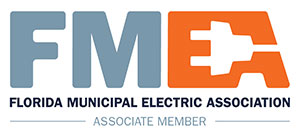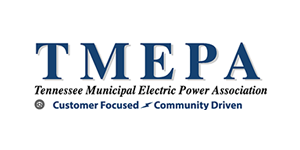Sectors Serviced: Utilities
Utility infrastructures, including power plants, water treatment facilities, and telecommunication networks, are critical to the functioning of modern society. These essential services face a wide range of threats, both man-made and natural, which can disrupt operations, lead to widespread outages, and even endanger public safety. 3B Protection Inc. offers specialized solutions to address the unique challenges faced by the utility sector.
Key Threats to Utility Infrastructures
- Physical Attacks and Sabotage:
- Threat: Utilities are high-value targets for sabotage, terrorism, and vandalism. Attacks on power substations, pipelines, or water treatment facilities can disrupt entire regions, potentially causing long-lasting outages.
- How 3B Helps: 3B’s ballistic and blast-resistant walls, gates, and perimeter barriers provide critical protection to utility infrastructures, safeguarding them against physical attacks. These systems are designed to withstand gunfire, explosives, and forced entry attempts, making it difficult for attackers to compromise utility sites.
- Explosions and Blasts:
- Threat: Gas lines, fuel depots, and energy storage facilities are vulnerable to accidental explosions or deliberate attacks. An explosion in a key area can cause cascading failures across entire utility networks.
- How 3B Helps: 3B’s blast-resistant materials, which absorb and disperse explosive force, protect crucial infrastructure like pipelines, fuel tanks, and transformers. These protective barriers minimize the impact of blasts and help prevent the spread of damage, ensuring the safety of personnel and equipment.
- Natural Disasters (Seismic, Hurricanes, Tornadoes, and Flooding):
- Threat: Earthquakes, hurricanes, tornadoes, and floods can severely damage utility infrastructure, leading to prolonged outages and significant repair costs.
- How 3B Helps: 3B’s seismic, tornado, and hurricane-resistant materials are designed to protect against the extreme forces of nature. By reinforcing buildings, storage facilities, and critical structures, 3B ensures that essential services remain operational during and after natural disasters, minimizing downtime and service interruptions.
- Electromagnetic Pulse (EMP) and High-Altitude EMP (HEMP) Attacks:
- Threat: EMP and HEMP attacks can knock out electrical grids, disrupt telecommunications networks, and compromise power plant control systems. These attacks have the potential to cripple utility operations on a national scale.
- How 3B Helps: 3B’s EMP and HEMP protection materials are designed to shield critical utility infrastructure from electromagnetic disruptions. This includes protecting control rooms, data centers, and transmission equipment, ensuring that utilities can continue functioning in the event of an EMP attack.
- Theft and Vandalism:
- Threat: Utility facilities are frequently targeted for the theft of valuable materials such as copper or for vandalism. These incidents can cause significant operational disruptions and financial losses.
- How 3B Helps: 3B’s anti-theft and forced entry-resistant systems help utilities secure their facilities against break-ins and theft. Products like 3B’s Anti-Theft Matting System are particularly effective in preventing the theft of copper and other valuable metals, providing added protection against opportunistic criminals.
- Cybersecurity Threats to Physical Infrastructure:
- Threat: While primarily digital, cybersecurity threats can also affect the physical operations of utility systems. A breach in control systems can allow attackers to remotely disable infrastructure or create malfunctions that can lead to safety hazards.
- How 3B Helps: 3B’s physical security solutions work in tandem with cybersecurity measures to protect critical control rooms and data centers, ensuring that only authorized personnel can access sensitive systems. This adds an extra layer of defense against cyber-physical threats.
- Environmental and Fire Hazards:
- Threat: Utilities are often located in remote areas where fire hazards are prevalent, particularly in power substations and transmission line corridors. These fires can cause widespread damage to electrical grids and other utility systems.
- How 3B Helps: 3B offers fire-resistant solutions that protect critical utility infrastructure from fire damage. By providing materials that can withstand extreme heat for several hours, 3B ensures that utility systems remain intact during fire-related emergencies.
How 3B Can Holistically Protect Utilities
To address these varied threats, 3B Protection provides a range of turnkey security solutions tailored to the utility sector:
- Ballistic and Blast Protection: Safeguarding critical utility assets like power substations, transformers, pipelines, and control rooms against attacks, explosions, and gunfire.
- Natural Disaster Protection: Reinforcing utility structures to withstand earthquakes, hurricanes, tornadoes, and floods, ensuring operational continuity even in the aftermath of natural disasters.
- EMP and HEMP Protection: Shielding sensitive electrical infrastructure and control systems from the effects of EMP or HEMP attacks, ensuring the uninterrupted operation of critical utility functions.
- Anti-Theft and Forced Entry Protection: Preventing theft of valuable materials and unauthorized access to restricted areas through forced entry-resistant doors, walls, and Anti-Theft Matting Systems.
- Fire Protection: Offering fire-resistant materials to safeguard utility infrastructure from fire hazards, minimizing the risk of damage and service disruption.
- Sustainability and Retrofit Options: Supporting utilities with eco-friendly, sustainable solutions that meet modern environmental standards, while also providing quick retrofit capabilities for upgrading existing infrastructure.
Conclusion
Utility infrastructures are essential to the daily functioning of society, but they face significant threats from physical attacks, natural disasters, EMPs, and more. 3B Protection offers comprehensive solutions that not only secure utilities from these threats but also enhance their resilience, ensuring that critical services continue operating even during emergencies. By combining advanced ballistic, blast, forced entry, and EMP protection with sustainability and retrofitting options, 3B helps utilities safeguard vital assets, protect the public, and reduce the risk of disruptions across the grid.












